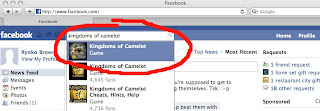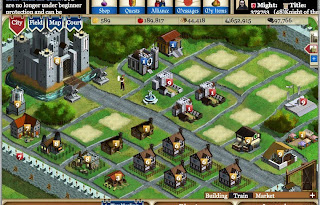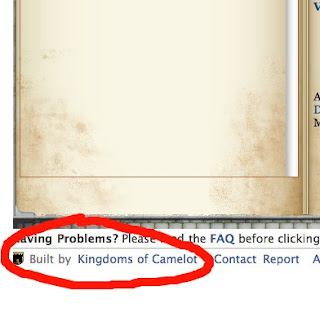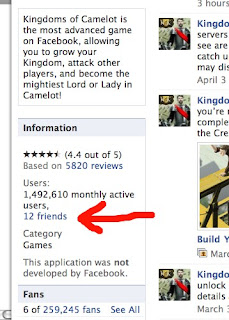Comparing the Sun and Earth, both are astronomical objects, but one is a star and the other is a planet. Stars like the Sun are balls of ionized gas, called plasma, engaged in thermonuclear fusion. Gas giant planets are balls of mostly gas that aren't massive enough to ignite for fusion. Terrestrial planets like the Earth are balls of mostly solid and liquid that aren't massive enough to hold enormous atmospheres of gas. In the Sun-Earth relationship within the Solar System, the Earth orbits around the Sun.
More
16 September 2010
01 September 2010
From Mysterious Egg to Phoenix in Treasure Isle: A Strategy Guide
What is the Treasure Isle mysterious egg? It falls from the sky and lands on your home island, then tells you to explore a volcano. What volcano? It's called Fire God Mountain - and you'll need all the hints you saw on the other maps - Treasure Nearby!, Treasure Really Close! - to beat the dig scores of all your friends. Find out how to use them here to earn your volcano trophy and hatch your mysterious egg into a phoenix.
30 August 2010
Particle Physics in Cosmology
The Standard Model of particle physics identifies the elementary particles of matter and provides an explanation for three of the four fundamental forces of nature - electromagnetism and the strong and weak forces, using force mediating gauge bosons and a mass mediating Higgs boson particle.
This series of articles explains it all in (relatively) easy-to-understand plain language.
This series of articles explains it all in (relatively) easy-to-understand plain language.
18 August 2010
How is a Gamete Different From Other Cells in the Body?
From a strictly genetics perspective, there are two types of cells in a multicellular body: somatic cells and germinal cells. Germinal cells make sex cells, or gametes. All other cells in the body are somatic cells. How is a gamete different than other cells in the body? Learn the two biggest differences here.
15 August 2010
History of Medieval Astronomy
The prevailing cosmology throughout the Middle Ages was geocentrism, with Earth as the center of the Universe. Ptolemy published his epicycles model in Almagest in 150 CE. The medieval period of Europe is widely accepted among historians as beginning in 200 CE, after the fall of the Roman Empire, and ending in 1500. Copernicus reintroduced and expanded upon the concept of heliocentrism in Revolutionibus Orbium Celestium, published in 1543. The history of medieval astronomy, then, can be summarized as "not much happened."
HOWEVER... the parts before and after were very exciting. :) More here
HOWEVER... the parts before and after were very exciting. :) More here
02 August 2010
Farm Games on Facebook: A Brief History
In the beginning, there were farm games like Barn Buddy and Happy Farm on Facebook. Then, Farm Town appeared. Then, Zynga stole their concept and made Farmville - and a bunch of relentless marketing later, everyone now thinks Farmville was there first. Now there are lots of farm games, like Tiki Farm, Farm Country, and Country Life, and the basic gameplay mechanic Farm Town introduced is everywhere.
More
More
01 August 2010
How to get Saltpeter in Frontierville
In Frontierville, saltpeter is used to make fireworks, which is an important part of the 4th of July quest on Frontierville. How to get saltpeter then? This article explains where it comes from (manure) and how to make fireworks with it.
31 July 2010
An Astronomy Nova
What is a nova? In terms of astronomy, it's when a star suddenly becomes a lot brighter, then dims over several months. This article explains how and why novae occur, and compares novae to x-ray bursters and supernovae.
24 July 2010
Is Spontaneous Self-Correction of Gene Mutations Possible?
The short answer is yes. However, that's not as exciting as it sounds. Click here to learn more about what mutations are and how they work.
20 July 2010
The Teleport Cheat for Cafe World on Facebook
Teleportation, a Cafe World Facebook cheat, lets your restaurant serve food to diners faster with fewer waitstaff, which makes your buzz rating go way up. It takes advantage of a cafe layout bug. The same cheat works on cooks, too, to make them cook and deliver food faster. Follow a few simple guidelines when setting up your restaurant layout to take advantage of this cheat.
19 July 2010
Bejeweled Blitz High Score Tips for Beginners
Trying to beat your friends' Bejeweled Blitz high scores but not sure how with only one minute? Here are a few basic tips that will help you speed up.
30 May 2010
Human Prion Diseases
Prion diseases are caused by malformed proteins that can also malform the normal versions of themselves. When they do this in the central nervous system, they cause brain damage and death. In humans, Creutzfeldt-Jakob disease is probably the most well-known for its relation to the version found in cows, bovine spongiform encephalopathy, also known as "mad cow disease."
More
More
29 May 2010
Animal Communication: What, How, and Why
Animals communicate in many myriad ways that are as diverse as the animals themselves. They communicate for a variety of reasons. Some examples are to attract mates, threaten rivals, warn about danger, or share information about food sources. The different ways in which animals communicate can be visual, audial, or chemical (smell or taste). For highly social species, there may be facial expressions, body language, or dances.
More
More
02 May 2010
Beginner's Guide to Facebook Game Castle Age
Castle Age is a Facebook game with a fantasy theme. There are quests, heroes, generals which are heroes that lead quests, demi powers which aren't heroes, and tribute-paying to the demi powers which gives you bonuses and unlocks more quests. There are lands, soldiers, weapons, armor, and magical powers. There are alchemy ingredients, some of which are also soldiers, weapons, armor, or magical powers. There are battles with other players and battles with monsters. There are experience points, upgrade points, demi points, battle points, and favor points. There are three separate ways to add your friends to the game.
In short, there are lots of buttons to do lots of different things, lots of characters and items and tabs for things everywhere, and it can all be very confusing when you've just started.
Guide to Castle Age: Overview of Game Layout and Points
Guide to Castle Age: Hints and Tips About Quests, Items, and Characters
Guide to Castle Age: Hints and Tips About Friends, Battles, and Monsters
In short, there are lots of buttons to do lots of different things, lots of characters and items and tabs for things everywhere, and it can all be very confusing when you've just started.
Guide to Castle Age: Overview of Game Layout and Points
Guide to Castle Age: Hints and Tips About Quests, Items, and Characters
Guide to Castle Age: Hints and Tips About Friends, Battles, and Monsters
01 May 2010
Calculating Rotational Kinetic Energy
Rotational kinetic energy is the amount of energy that an object has while going around in a circle. To calculate it, you will need to know two things: its angular velocity (i.e., how fast it's going around in a circle) and its moment of inertia (i.e., inertia while going in a circle).
Step 1: Weigh the object to get its mass in kilograms. We'll call it "m."
Step 2: Measure the distance between the object and the center of rotation. The center of rotation is the point that the object is circling. For example, if you have a ball on the end of a string that you're twirling over your head, the center of rotation would be your hand and the distance would be the length of string between your hand and the ball. We'll call this distance "r." You'll want this in meters.
Step 3: Calculate moment of inertia. Multiply mass by distance squared: I = m * r2.
Step 4: Measure how long it takes, in seconds, for the object to make one complete circle around the center of rotation. This is angular velocity in revolutions per second. For simple objects like a ball on the end of a string, you can use a stopwatch. If you prefer to make the measurement in revolutions per minute (RPM), you will need to divide by 60 to convert to seconds.
Step 5: Convert angular velocity into radians per second. A full circle is 2 * π radians, or about 6.28318 radians. If it takes one second for the object to make one full circle, the angular velocity would be 6.28318 radians per second. One RPM would be 6.28318 divided by 60, or 0.1047 radians per second. We'll call this "w."
Step 6: Multiply moment of inertia by angular velocity squared, then divide by two to arrive at the answer: RKE = I * w2 * 1/2. This gives you the rotational kinetic energy in joules. One joule is equal to one (kilogram * meter2) / second2.
Tips
You can weigh the object in pounds and ounces, and measure the distance in feet and inches, then convert to kilograms and meters before continuing.
Warnings
This is the generalized form of the equation. It assumes that all of the object's mass is at the same distance from the center of rotation. This works well for items at the end of a string or hoop objects like bicycle wheels. If different parts are at different distances, you will need to calculate moment of inertia separately for each, then add them all together for a total. If it's a solid object spinning around an axis rather than lots of parts circling a point, you will need to use calculus--however, there are some equations for the more common types of objects in the third reference listed.
Additional resources from C.R. Nave's Hyperphysics:
Rotational Kinetic Energy
Angular Velocity
Moment of Inertia
Step 1: Weigh the object to get its mass in kilograms. We'll call it "m."
Step 2: Measure the distance between the object and the center of rotation. The center of rotation is the point that the object is circling. For example, if you have a ball on the end of a string that you're twirling over your head, the center of rotation would be your hand and the distance would be the length of string between your hand and the ball. We'll call this distance "r." You'll want this in meters.
Step 3: Calculate moment of inertia. Multiply mass by distance squared: I = m * r2.
Step 4: Measure how long it takes, in seconds, for the object to make one complete circle around the center of rotation. This is angular velocity in revolutions per second. For simple objects like a ball on the end of a string, you can use a stopwatch. If you prefer to make the measurement in revolutions per minute (RPM), you will need to divide by 60 to convert to seconds.
Step 5: Convert angular velocity into radians per second. A full circle is 2 * π radians, or about 6.28318 radians. If it takes one second for the object to make one full circle, the angular velocity would be 6.28318 radians per second. One RPM would be 6.28318 divided by 60, or 0.1047 radians per second. We'll call this "w."
Step 6: Multiply moment of inertia by angular velocity squared, then divide by two to arrive at the answer: RKE = I * w2 * 1/2. This gives you the rotational kinetic energy in joules. One joule is equal to one (kilogram * meter2) / second2.
Tips
You can weigh the object in pounds and ounces, and measure the distance in feet and inches, then convert to kilograms and meters before continuing.
Warnings
This is the generalized form of the equation. It assumes that all of the object's mass is at the same distance from the center of rotation. This works well for items at the end of a string or hoop objects like bicycle wheels. If different parts are at different distances, you will need to calculate moment of inertia separately for each, then add them all together for a total. If it's a solid object spinning around an axis rather than lots of parts circling a point, you will need to use calculus--however, there are some equations for the more common types of objects in the third reference listed.
Additional resources from C.R. Nave's Hyperphysics:
Rotational Kinetic Energy
Angular Velocity
Moment of Inertia
27 April 2010
Causes of Change in an Ecosystem
Ecosystems are places that naturally change over time. Biodiversity includes both number of species and their abundance relative to each other. The changes in an ecosystem that typically cause concern are the large, drastic ones that reduce biodiversity down to only a few highly dominant species.
More
More
20 April 2010
Black Vulture Phylogeny
Inspiration behind: Origin and Phylogeny of Vultures
There are two birds commonly called "black vulture." One is Coragyps atratus which is found in the Americas as a member of family Vulturidae (or Cathartidae). The other is the Eurasian black vulture, Aegypius monachus of the family Accipitridae (eagles, hawks, kites, etc.). The phylogeny of the black vultures in particular isn't especially complicated, but phylogeny of vultures in general can be, since they exist in three distinct groups. Click here for more details, including phylogenetic tree diagrams.
There are two birds commonly called "black vulture." One is Coragyps atratus which is found in the Americas as a member of family Vulturidae (or Cathartidae). The other is the Eurasian black vulture, Aegypius monachus of the family Accipitridae (eagles, hawks, kites, etc.). The phylogeny of the black vultures in particular isn't especially complicated, but phylogeny of vultures in general can be, since they exist in three distinct groups. Click here for more details, including phylogenetic tree diagrams.
19 April 2010
Finding the distance in 3D space between two points: Theory and Real World Use
First, the theory....
Individual points in three dimensional space can be represented on a Cartesian coordinate grid. Each point is noted as three numbers separated by commas, of the form "X, Y, Z," where each number is for a different dimension. The simplest way to calculate the distance between two points is to apply the Pythagorean theorem twice.
Step 1: Suppose your two points are X1, Y1, Z1 and X2, Y2, Z2. If Y1 = Y2 and Z1 = Z2, leaving only the two X numbers different from each other, what you have is a one-dimensional problem. Subtract the smaller X from the larger X.
For example, if your points are 3, 4, 7 and 11, 4, 7, you would subtract as 11 minus 3, giving you a distance of 8.
Step 2: Suppose Z1 = Z2, but the X numbers and Y numbers are both different from each other. What you have is a two-dimensional problem. To solve it, imagine a right-angled triangle where the distance between the two points is the length of the hypotenuse. The Pythagorean theorem states that A^2 + B^2 = C^2. The length of A would be X2-X1, and the length of B would be Y2-Y1. The distance, C, would be the square root of (X2-X1)^2 + (Y2-Y1)^2.
For example, if your points are 3, 4, 7 and 11, 10, 7, you would take the square root of (11-3)^2 + (10-4)^2, or 64 + 36, or 100. This gives you a distance of 10.
Step 3: Suppose all three pairs of numbers are different. Now it's a three-dimensional problem. Calculate C from the X and Y numbers, as in Step 2. This gives you one of the two non-hypotenuse sides of a new right triangle. The other non-hypotenuse side is Z2 - Z1. Applying the Pythagorean theorem again, you would take the square root of (Z2 - Z1)^2 + the first C^2.
For example, if your points are 3, 4, 7 and 11, 10, 22, you would take the square root of (22 - 7)^2 + 10^2, or 225 + 100, or 325. Your distance would be approximately 18.
So much for the mathematical theory. Now, how it would be done if you had an actual physical object, and you couldn't just insert a ruler up inside to get it directly....
To calculate the distance between the upper left front corner and lower right rear corner of a box-shaped object, without measuring from the inside of the object, you only need to know its outside dimensions.
Step 1: Measure the length, width and height of the object.
Step 2: Calculate the squares of each. Multiply length times length, width times width, and height times height. For example, if length is 6, width is 8, and height is 15, their squares would be 36, 64, and 225.
Step 3: Add all of these together. Then take the square root. In our example, that would be the square root of 36 + 64 + 225, which adds up to 325. 18 times 18 is 324, so the square root of 325--and the final answer--is a little over 18.
Individual points in three dimensional space can be represented on a Cartesian coordinate grid. Each point is noted as three numbers separated by commas, of the form "X, Y, Z," where each number is for a different dimension. The simplest way to calculate the distance between two points is to apply the Pythagorean theorem twice.
Step 1: Suppose your two points are X1, Y1, Z1 and X2, Y2, Z2. If Y1 = Y2 and Z1 = Z2, leaving only the two X numbers different from each other, what you have is a one-dimensional problem. Subtract the smaller X from the larger X.
For example, if your points are 3, 4, 7 and 11, 4, 7, you would subtract as 11 minus 3, giving you a distance of 8.
Step 2: Suppose Z1 = Z2, but the X numbers and Y numbers are both different from each other. What you have is a two-dimensional problem. To solve it, imagine a right-angled triangle where the distance between the two points is the length of the hypotenuse. The Pythagorean theorem states that A^2 + B^2 = C^2. The length of A would be X2-X1, and the length of B would be Y2-Y1. The distance, C, would be the square root of (X2-X1)^2 + (Y2-Y1)^2.
For example, if your points are 3, 4, 7 and 11, 10, 7, you would take the square root of (11-3)^2 + (10-4)^2, or 64 + 36, or 100. This gives you a distance of 10.
Step 3: Suppose all three pairs of numbers are different. Now it's a three-dimensional problem. Calculate C from the X and Y numbers, as in Step 2. This gives you one of the two non-hypotenuse sides of a new right triangle. The other non-hypotenuse side is Z2 - Z1. Applying the Pythagorean theorem again, you would take the square root of (Z2 - Z1)^2 + the first C^2.
For example, if your points are 3, 4, 7 and 11, 10, 22, you would take the square root of (22 - 7)^2 + 10^2, or 225 + 100, or 325. Your distance would be approximately 18.
So much for the mathematical theory. Now, how it would be done if you had an actual physical object, and you couldn't just insert a ruler up inside to get it directly....
To calculate the distance between the upper left front corner and lower right rear corner of a box-shaped object, without measuring from the inside of the object, you only need to know its outside dimensions.
Step 1: Measure the length, width and height of the object.
Step 2: Calculate the squares of each. Multiply length times length, width times width, and height times height. For example, if length is 6, width is 8, and height is 15, their squares would be 36, 64, and 225.
Step 3: Add all of these together. Then take the square root. In our example, that would be the square root of 36 + 64 + 225, which adds up to 325. 18 times 18 is 324, so the square root of 325--and the final answer--is a little over 18.
18 April 2010
How to find out which of your friends play a Facebook game
Originally posted at eHow until 14 Apr 2010.
For most Facebook games, you need lots of friends who also play. Otherwise you miss out on bonuses or have a weaker army. But many games don't automatically add all your friends to your friends list - you have to track them down and send requests yourself. This article explains how you can tell which of them already play a game you play, so that you can send requests to the right ones and avoid bothering the rest.
Step 1: Type the game name into Facebook's main search box. When the game appears in the results, click on it.

Step 2: If you don't already play the game, clicking on it from the Facebook search box results will take you directly to the game's Facebook page.
Step 3: If you do already play the game, clicking on it in the search will load the game. You can also just load the game directly without using the search box if you have it bookmarked.

Scroll down to the very bottom of the page. To the bottom left it should say "Built by [game name]" where the game name is a link. Click the link. This will take you to the game's Facebook page.

Step 4: In the left sidebar of the game's Facebook page, there is a box titled "Information." It tells you things like the game's star rating and how many people rated it, how many monthly active users it has, and application category (probably "game").
Right under monthly active users, it tells you how many total friends use the app. This is also a link. Click it to go to the list of friends.

For most Facebook games, you need lots of friends who also play. Otherwise you miss out on bonuses or have a weaker army. But many games don't automatically add all your friends to your friends list - you have to track them down and send requests yourself. This article explains how you can tell which of them already play a game you play, so that you can send requests to the right ones and avoid bothering the rest.
Step 1: Type the game name into Facebook's main search box. When the game appears in the results, click on it.

Step 2: If you don't already play the game, clicking on it from the Facebook search box results will take you directly to the game's Facebook page.
Step 3: If you do already play the game, clicking on it in the search will load the game. You can also just load the game directly without using the search box if you have it bookmarked.

Scroll down to the very bottom of the page. To the bottom left it should say "Built by [game name]" where the game name is a link. Click the link. This will take you to the game's Facebook page.

Step 4: In the left sidebar of the game's Facebook page, there is a box titled "Information." It tells you things like the game's star rating and how many people rated it, how many monthly active users it has, and application category (probably "game").
Right under monthly active users, it tells you how many total friends use the app. This is also a link. Click it to go to the list of friends.

Subscribe to:
Posts (Atom)


